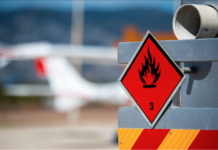
Ports on both sides of the Pacific will not see relief from the congestion that is currently blighting the facilities until there is a slow-down in trade volumes, according to the forwarder Worldwide Logistics.
Asian ports are running out of space and equipment as a backlog of cargo, some two-three weeks long is blighting the ports in China and Southeast Asia, with Jon Monroe from Worldwide saying that the ports are “Too far behind” to catch up until demand for cargo falls.
“I have heard of vessels not sailing full. Think about it, if they are leaving bookings behind because of no equipment, the backlog will only serve to create more congestion and extend the backlog of orders further down the line. Currently, there is a two to three-week backlog of containers in the terminals in Asia,” said Monroe.
According to Monroe, the lack of equipment in some Asian ports is so acute that even those shippers that have purchased premium services are unable to find containers.
He went on to explain, “Carriers have used this pandemic to increase rates and add new charges to be applied to shipments as companies struggle to get their product to their market paying exorbitant prices. Some importers have simply gone out of business. This year has seen the introduction of a whole group of surcharges that increased the average rate above the freight of all kinds (FAK) spot levels.”
According to Monroe, Hapag-Lloyd has suspended US exports to China and he believes that “It is only a matter of time for other carriers to follow suit.”
In addition, the importers are holding on to import containers before they are returned to the carriers. “With a container imbalance of two to one favouring the eastbound (US Import Trade) combined with the fact that westbound vessels cannot load as many containers, the balance can only shift back to Asia when the volume declines. When containers arrive in the US the volume importers keep the equipment for 10 to 14 days making average dwell time outside the terminal 8 to 10 days,” added Monroe.
Container Trades Statistics (CTS) show that in the first eight months of this year Far East to North America container volumes were down 2%.
Dutch consultancy Dynamar’s, Darron Wadey told Container News, “The Transpacific routes are counter intuitive,” he said that the data showed US East Coast capacity has increased by 16% from September 19 to August 20 and by 8% to the US West Coast.
In usual circumstances the decline in demand would lead to downward pressure on rates, but, “we can see, that has not happened,” said Wadey.
Dynamar believes that there are two underlying factors to take into consideration, in the first place, capacity calculations assumed services running at full strength and frequency.
“As we know, the carriers have managed (Transpacific) capacity by cutting one sailing from one service, one from another and so on. So the capacity ‘growth’ observed in July 2020 was, therefore, virtual instead of actual, and actually, an over-estimate. By removing the skipped sailings, this should bring the supply/capacity comparison of 2020 against 2019 closer to parity, although not likely to be at parity,” said Wadey.
Demand volatility has also played a role with a distinct difference between the first four and second four months of the year.
Comparing the first four months of 2020 with the same period last year, according to CTS figures, Transpacific carryings were 9% down, year-on-year, explained Wadey, but for the period from May to August they were actually 4% up, period-on-period.
“Add in the container logistics issue – we’re not convinced there is a shortage of boxes per se, rather they are not where they are needed – this might explain why Far East-US rates increased; post April 2020, demand growth ran substantially higher than capacity development,” said Wadey.
These shifts in volumes are reflected in how the Far East to US West Coast rates have behaved, according to an analysis by Dynamar, who said that in the first 17 weeks of 2020, to end April, they were 11% down, year-on-year. Since then (and up to week 43) they have been 105% up, on average.
“Again, this latter can only be a result of rebounding volumes over this four-month period, plus capacity management, all exacerbated by equipment availability issues.”
Monroe appears to acknowledge the Dynamar analysis arguing that the box imbalance was not caused by a surge of container demand, but had rather been caused by the vessel operators themselves. “Had the carriers not continued the blank sailings as the containers began clogging the terminals at origin, the situation would not have gotten this bad. They knew what they were doing, and they have done this before,” he claimed.

Nick Savvides
Managing Editor





